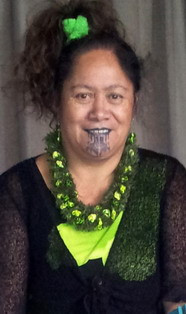Te Tomokanga: Acceptable child and adolescent mental health service caregivers perspectives
Dr Kahu McClintock, a member of the HRC Māori Health Committee and Chair of the Nga Kanohi Kitea funding initiative, shares her PhD findings.
Aim
My aim in this project was to investigate and compare the acceptability of mainstream (1), bicultural and kaupapa Māori Child and Adolescent Mental Health Services (CAMHS) access and delivery to young Māori according to the views of their whānau (2). I also explored what would constitute a good service for Māori as defined by Māori caregivers.
Method
A kaupapa Māori (Māori driven) research paradigm, based on the Pōwhiri process of engagement and participation (McClintock, Mellsop, Merry and Moeke-Maxwell, 2010) guided both the quantitative and qualitative research approaches. The study involved three phases which included the:
i) Te Ara Whanui, a pilot questionnaire based quantitative phase with participants using Te Tomokanga, a reliable, validated survey modified for this study, from the Youth Services Survey for Families (YSS-F) (3) (McClintock, Moeke-Maxwell, Frampton and Mellsop, 2012).
ii) Whaia te Ara Whanui, a sequential whānau interview based qualitative phase that involved self chosen participants, respondents from the Te Ara Whanui phase (McClintock, Moeke-Maxwell and Mellsop, 2011); and
iii) Te Hononga, a concurrent whānau interview-based qualitative phase that involved self-chosen participants who only consented to a face to face interview (McClintock et al, 2011).
Results and discussion
The Te Tomokanga survey was completed by 168 respondents from the six CAMHS of the Midland health region (4) District Health Boards (DHBs). I have shown through the survey, although with some constraints, that the respondents in this study had similar levels of acceptance of the three service types; mainstream, bicultural and kaupapa Māori (McClintock et al, 2012).
For these whānau, acceptability of services was shown to be related to whānau involvement and service delivery that takes into account cultural differences, all at statistically significant levels (p<0.001). This supports the concept that Māori may desire therapeutic methods consistent with the Whare tapa whā (5), such as whānau involvement and the importance of recognising culture and spirituality (McClintock, et al, 2012).
The Whaia te Ara Whanui and Te Hononga phases involved face-to-face interviews which were conducted with 50 participants, 25 in each of these phases. The whānau in the Whaia te Ara Whanui phase had also completed the Te Tomokanga survey and were generally satisfied with what the three different CAMHS types had provided. This acceptance was based on respectful partnerships and the development of appropriate cultural support. However the whānau in the Te Hononga phase who declined to complete the Te Tomokanga survey but agreed to be interviewed, reported less positive experiences. They generally believed the CAMHS workforce they dealt with struggled to provide appropriate cultural support. They were also frustrated by the lack of information on medication and its benefits (McClintock et al, 2011).
Results from both these phases contributed to the conceptual development of a CAMHS best practice model. This aligns with the traditional Pōwhiri process of engagement and participation, particularly the components of karanga, mihimihi, whaikōrero and koha (McClintock et al, 2010). This process values respectful relationships, commitment and reciprocity. The challenge for CAMHS is to work in a collaborative and culturally appropriate way that satisfies all Māori whānau (McClintock et al, 2011).
Conclusion
I have conducted the first in-depth investigation into the acceptability of CAMHS for Māori whānau. The findings from this study support the concept that successful engagement and participation of Māori with CAMHS is more likely to occur when whānau involvement is encouraged and when culture issues are supported. The findings from my study are viewed useful to guide future CAMHS development with the Tomokanga survey forming part of the assessment of this progress. The proposed development aligns with the traditional Pōwhiri process of engagement and participation of Māori with CAMHS. This is founded on cultural respect, partnership, cooperation, reciprocity and commitment. This study advocates for a CAMHS delivery and workforce with the ability to offer these processes.
References
1. Durie, M. (1994). Whaiora: Maori Health Development. Auckland: Oxford University Press.
2. McClintock, K. K., Mellsop, G., Merry, S. & Moeke-Maxwell T. (2010). Pōwhiri Process in Mental Health Research, International Journal Social Psychiatry. 56 (6), 1-2
3. McClintock, K.K., Moeke-Maxwell, T., Frampton, C., Mellsop, G., (2012). Pilot of Te Tomokanga, A Child and Adolescent Mental Health Service (CAMHS) Evaluation Tool for An Indigenous Population International Indigenous Policy Journal 3 (1) Retrieved from :http:ir.lib.uwoc.ca/iipj/vol3/issl/5.
4. McClintock, K.K., Moeke-Maxwell T., Mellsop, G., (2011). Appropriate Child and Adolescent Mental Health Services: Māori Caregiver’s Perspectives Pimatisiwin: A Journal of Aboriginal and Indigenous Community Health 9 (2) 387 - 398
5. Riley, S., E., & Stromberg, A. J. (2001). Parent satisfaction with services for Medicaid youth at community mental health centres in Kentucky: 2000, Technical report.
